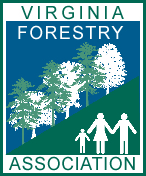Tree Information
Common Name: chestnut oak
Scientific Name: Quercus montana (syn. Quercus prinus)
Native/Naturalized: Native to Virginia
Database ID: 1941
Status: dead
National Champion: no
Virginia Champion: no
Circumference: 241 in.
Height: 98 ft.
Crown: 74 ft.
Points: 358
Date Last Measured: 2012
Last Measured by: City of Alexandria Arborist Office
Date First Measured: 2012
Comments:
2022 comments From Rod Simmons: Sadly, over half of the tree's six large, Civil War age trunk resprouts were removed, leaving about a third of the tree's former canopy and girth.
A recent brief I wrote up on the decline of mature/old-age Quercus alba and Quercus montana in certain areas of the D.C. region: In my close study and experience, the decline of mature/old-age Quercus alba and Quercus montana in certain areas of the D.C. region is owed to climate change stressors and effects. The declining/dying mature/old-age Quercus alba and Q. montana sprouted and grew in a different climate than that of today. The conditions when these tress sprouted and grew consisted of much more evenly spread moisture throughout the year, no extended climate change droughts for nearly 25 consecutive years, no extended heat island effects, and no detrimental ground ozone. Young oaks can adapt to this, depending on the species, but mature and old-age ones (i.e., 100 years of age and older) cannot. No problems for blackjack, southern red, black, scarlet, and post oaks. Post oak is the toughest of the White Oak Group with respect to extreme heat and drought. Chestnut oak is very tough as well but prefers a cooler, montane aspect and air, typically with some fog/rain-shadow effect. However, it typically produces the most abundant seedlings and saplings, which should nicely succeed the senior trees. Remember, the young trees are not dying back or off - only the senior trees that spent much of their life in a different climate and moisture regime.
Photo below: The remains of former Virginia State Champion Chestnut Oak (Quercus montana) below Battery Garesche on steep bank above Route 7 (Leesburg Turnpike) in the City of Alexandria, Virginia.
2012 comments: Tree is multi-stemmed at breast height and therefore was measured at 18" above ground, the narrowest point between ground line and breast height. Tree is healthy, with no visible threats.
The tree is a remnant of "Washington Forest" in the City of Alexandria near the Arlington County border, within a several acre, semi-wooded section of North Fairlington. This area contains numerous old-age remnant trees of historic Washington Forest, a large forested tract purchased by George Washington in the late 1700s and later part of grounds of the once-vast Arlington estate owned by the Custis-Lee families (Rose 1976, ABCTF 2001).
During the Civil War, Battery Garesche was constructed approximately 2,000 ft. to the east of this area at the summit of the terrace. This oak was probably cut as a fairly large tree during the Civil War to allow unobstructed cannon fire from nearby Battery Garesche. Chestnut oak was the dominant tree of the forested heights at most of the fortifications, which were typically cut at about 5' above the ground (Gernand 2002). Chestnut Oak readily re-sprouts from stump cuts and can easily live for centuries. Similar-aged, multi-trunked chestnut oak are also present on the upper slopes near the summits of the fort sites at Ft. Buffalo near Seven Corners in Falls Church, Virginia and Battery Kemble in Washington, D.C., as well as other Civil War fortifications of the area. (Remnant Natural Areas in Parks, Waterways, and Undeveloped Sites in the City of Alexandria, Virginia: Beauregard Street Corridor; Simmons 2012). See www.nps.gov/cwdw/historyculture/places.htm for more information on the Civil War Defenses of Washington, including historic maps of the fort locations and surrounding lands.
Much of the site comprises an extremely steep, west-facing slope of gravelly colluvium dominated by remnant, old-age chestnut oak (Quercus montana), black oak (Quercus velutina), white oak (Quercus alba), southern red oak (Quercus falcata), and pignut hickory (Carya glabra). Old and large tulip tree (Liriodendron tulipifera) occur along the lower slopes, with northern red oak (Quercus rubra), red mulberry (Morus rubra), and other trees. Old sweetgum (Liquidambar styraciflua) grow in the remnants of an old seepage swamp at the outflow of the south branch of Lucky Run southeast of the intersection of S. 28th St. and King St. See https://www.alexandriava.gov/uploadedFiles/recreation/parks/RemnantNaturalAreasBeauregardStreetCorridor2.pdf for more information.

Location of Tree
Tree is located in: City of Alexandria
Land Owner: Fairlington Villages (North)
GPS Coordinates: 38.83851, -77.10406
Owner Email: office@fairlingtonvillages.com
Directions: Tree is just below the back of 2902 S. Dinwiddie St. on a ridge above King St. (Rt. 7).
Owner Address: 3001 S. Abingdon St.
Arlington, VA 22206
Contact Information
Contact Name: City of Alexandria Urban Forestry Team
Contact Phone: 703-746-4665
Nominators
Original Nominator(s): City of Alexandria Arborist Office




